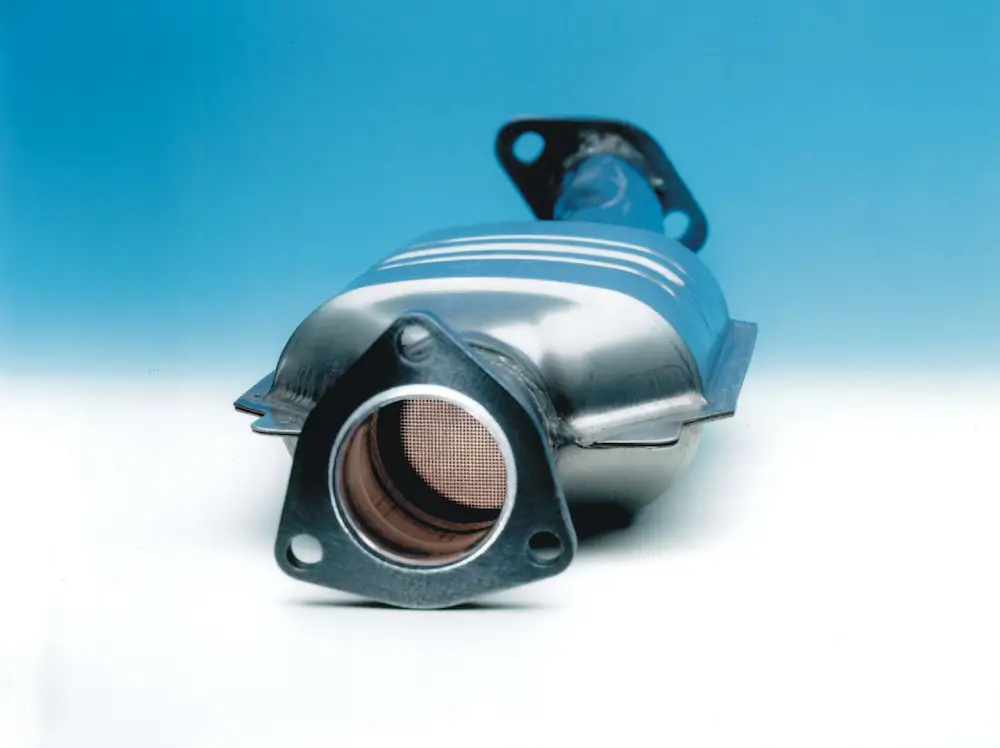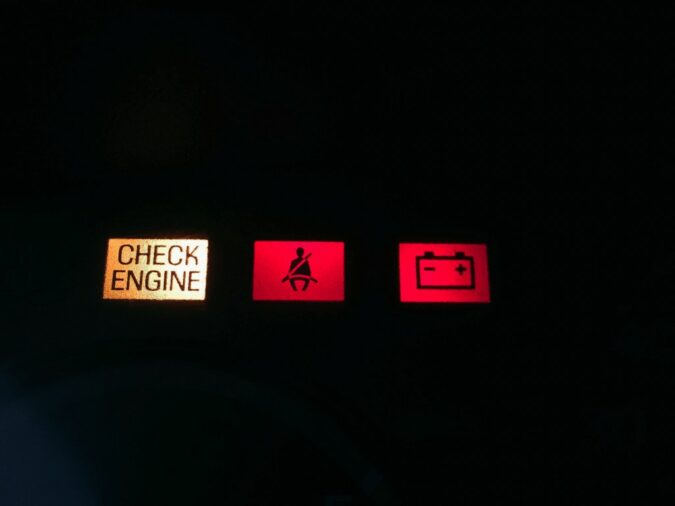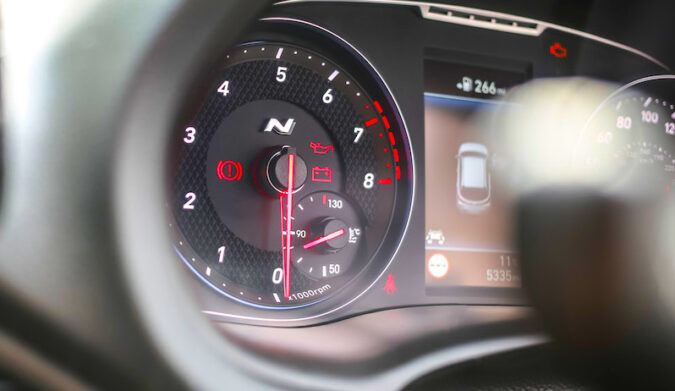Are you having the feeling that your car is performing poorly and you think that you experience some of the clogged catalytic converter symptoms? If this is the case, then you are at the right place because there will be a lot to cover on this topic.
- Catalytic Converter?
- Inside The Converter
- Location
- Symptoms
- Diagnosing
- Replacement
- Cost
- Conclusion
- F.A.Q
Having a problem with the catalytic converter is a really common thing nowadays. These catalytic converters are standard equipment on cars and are irreplaceable. Sadly though, sometimes they tend to fail and cause a ton of problems for us, the car owners.
And not only that, but these components are also a very common target of theft and a ton of people are also suffering from these thefts on a daily basis. But for this article, we only are interested in covering the symptoms of this component that produces when it breaks down. And knowing these symptoms will give you that extra edge when it comes to diagnosing this component on your vehicle.
But first, we are going to introduce ourselves to the topic and learn what is a catalytic converter. Then we will learn more about how this component works and its location. After that, we will cover the clogged catalytic converter symptoms and then we will learn how to diagnose this problem in your car. So, if you want to learn more, follow along.
What Is A Catalytic Converter?
Now before we dive into more complex topics like the clogged catalytic converter symptoms. Let’s first talk about the basics and learn what is a catalytic converter in general. I bet that there are a ton of people who are not into cars and want to learn more about the basic stuff. If you are one of them, follow along, if not, you can jump to the symptoms section.
Nevertheless, a catalytic converter is a special emissions device that is installed on our cars. Nowadays 100% of the new cars are having these catalytic converters. If the manufacturers want to sell their cars, they have to include this emissions equipment on their cars.
This is the case because, in the past, there was a ton of pollution in the big cities. Cities like L.A, or New York were suffocating in smog and something had to be done in order so this problem with the smog and other pollutants to be prevented.
And that’s why since the late 70s, stricter laws were put in place and a ton of emissions equipment was invented. Namely, the EVAP system, the PCV system, as well as in our case the catalytic converters. And these emission systems really brought a ton of benefits and improved the air quality immensely. But what is a catalytic converter?
Well, a catalytic converter as we mentioned above is an emissions device that is installed on the exhaust system. It is a cylindrically shaped device that resembles a muffler at the first sight. But actually, under the skin, it is rather different than a muffler.
And in the following chapter, we are going to explain how it works. And after we will discuss the clogged catalytic converter symptoms (or if you want to learn how to hollow out a catalytic converter without removing it).
Inside The Catalytic Converter
Now before we cover all of the clogged catalytic converter symptoms. Let’s first learn what is inside of a catalytic converter and how a catalytic converter works behind the curtain, what is doing all of the magic to neutralize these harmful toxic gases? Let’s explain.
Inside the catalytic converter, there is a catalytic reaction that is occurring every time the catalytic converter reaches the operating temperature which is between 1,200 and 1,600 degrees Fahrenheit.
This is why the catalytic converter needs to get up to temperature if you want to get the most out of it. Unless the catalytic converter is up to temperature, it will not work.
When a catalytic converter works, it catalyzes a redox reaction and this reaction is basically converting all the harmful toxins into something less harmful when they exit the catalytic converter (for more insight, check out our guide on what’s a catalytic converter made of and what is in a catalytic converter).
And because of the complex nature of this converter, it has to be built out of special materials that are rather expensive. Modern catalytic converters contain a small amount of platinum, palladium, and rhodium. And these are crazy expensive metals. Without them, the work of this component would be close to impossible.
Inside the catalytic converter, there is a honeycomb structure. And the gases are flowing through this honeycomb structure. From their entrance, they start the conversion and as they exit, they are converted into less toxic gases.
These converters since are really expensive are a target to a ton of thieves who want to steal them and sell them for a profit. This is why you should avoid parking your car in some suspicious neighborhoods. But where is this component located? Let’s cover that before we dive into the clogged catalytic converter symptoms.
Catalytic Converter Location In Car
Now before we dive into the clogged catalytic converter symptoms, let’s learn more about the catalytic converter location in the car. Where is this component located in the automobile?
Well, the catalytic converter is always mounted after the exhaust manifolds. The exhaust manifold is the component that is bolted onto the engine and to the exhaust manifold, the exhaust system is mounted.
The first line in the defense is the catalytic converter which is mounted right after the exhaust manifold. Then there is the mid-muffler and the rear muffler and the tailpipe at the end of the system.
https://www.youtube.com/watch?v=tJfTdjNVmGM
The catalytic converter usually deals with the gases when they are the hottest. If that was not the case, the converter would not work. As we said, the proper working temperature for this component is between 1,200 and 1,600 degrees Fahrenheit. If you don’t allow your car to reach these temperatures, you risk suffering symptoms of a clogged catalytic converter.
And a ton of people are making this mistake. They drive their cars only for short distances and do not allow this component to reach up to operating temperature. And once this is the case, the clogged catalytic converter symptoms will be present. And we are going to cover them in the following chapters in great detail.
Symptoms Of A Clogged Catalytic Converter
Now let’s cover the catalytic converter symptoms in the following chapters. Take note that these are the clogged catalytic converter symptoms.
There are also other symptoms of a broken converter and these include rattling noises, a rotten egg smell, and black smoke from the exhaust. Now let’s dive into the symptoms briefly before we learn how you can diagnose a bad converter.
Clogged Catalytic Converter Symptoms #1 – Check Engine Light
The first in our list of clogged catalytic converter symptoms that we will cover is the situation with the check engine light. The check engine light will appear whenever you have a clogged converter. So, why is this the case?
Well, this is the case because modern cars are pretty good at detecting issues with this component. Even though the converter is not connected to the car computer, there are two sensors before and after this catalytic converter that are known as O2 sensors.
The task for the O2 sensors is to monitor the level of oxygen inside the exhaust system and help the computer to determine the air to fuel ratio. But they also serve a purpose to help the computer detect whenever there is a problem with a certain catalytic converter.
So, if you have a clogged converter, you will highly likely get the check engine light and the codes P0420 or P0430. The first code indicates a problem on bank 1 where cylinder number 1 is located, while the latter indicates a problem with bank 2 of the engine.
And remember, you only have two banks if you drive a V6 or a V8 engine. Now let’s move to the next in our list of clogged catalytic converter symptoms.
Clogged Catalytic Converter Symptoms #2 – Engine Down On Power
The second in our list of clogged catalytic converter symptoms that you will notice is the situation when the engine is down on power.
When this component is obstructed, you will lose a ton of horsepower. The engine will simply not breathe and there will be a loss of horsepower.
You might lose 30% or more of the horsepower you have. And frankly, this is quite a big number. Why is this the case? Well, this is the case because the blockage of the catalytic converter acts as an air brake. This means that no air gets out and no air will get into the engine.
The overall combustion will really slow down and the car will not be responsive as it was before. The car will not like to accelerate in this situation and will be slow as a turtle.
You will press the gas to the floor and the car simply won’t budge at all. No matter what you throw at it. So, whenever you notice something like this, and you don’t get a check engine light.
It is advised that you check the air filter, fuel filter, and fuel injectors, and also check the catalytic converter. These components are notorious for clogging up and causing this issue maybe you have clogged catalytic converter symptoms and this is caused by the broken catalytic converter. Now let’s move on to the next symptom.
Clogged Catalytic Converter Symptoms #3 – Engine Stalling
The next in our list of clogged catalytic converter symptoms that we would like to cover is the situation when the engine stalls.
As you can probably assume when the converter is clogged there could be a partial blockage or a complete blockage.
If you have a complete blockage, inside the exhaust there will be a ton of backpressure that will simply kill the engine.
The engine will shut down and will struggle to start. All, this is because you don’t have a proper flow of the exhaust gases. The more the obstruction, the worse this problem will be.
In most cases when you have 80% obstruction the honeycomb structure simply breaks apart and will start to rattle until eventually is blown from the exhaust pipe. And until you reach this state, you will have a ton of trouble with your car.
This is why you should not ignore the clogged catalytic converter symptoms and diagnose the problem as quickly as possible. Now let’s move on to the next symptoms.
Clogged Catalytic Converter Symptoms #4 – Heat Coming From The Floor Of The Car
The next in our list of clogged catalytic converter symptoms is the situation when you have heat coming from the floor of your car.
And when it comes to a situation when the converter is clogged up, things will get really hot. In this situation, the car will radiate heat from the transmission tunnel and the dash. It will be unbearable to drive in most cases.
This situation as you assume is created because the heat is trapped inside of the exhaust pipe and the catalytic converter is obstructed.
The less flow of gases, the more heat will be in the cabin. In the summer this will be almost impossible to drive, even with AC you will feel this heat and if you do, then this is a good sign. You need immediately to look for the clogged catalytic converter symptoms and learn if you have a problem with this component.
And more on how to diagnose we are going to cover later on in the article. Now let’s cover the last in our list of clogged catalytic converter symptoms.
Clogged Catalytic Converter Symptoms #5 – Failing The Emissions Testing
The last in our list of clogged catalytic converter symptoms is the symptom when you fail the emissions testing. Yes, that’s right, whenever you have an obstructed catalytic converter, you can fail on the emissions in the same manner as when your catalytic converter is deleted. So, why is this the case?
Well, the reason behind this is simple, the technician at the inspection center will install a probe into the exhaust pipe of your car and will measure the flow of gases.
If he notices some abnormal values from your car, he will immediately be able to tell that you have an obstructed catalytic converter and he will tell you to fix the car and bring it back for another test.
Still, not all of the states are this strict but in some places like California or NY, you will not be able to register a vehicle that is working in this manner. This is why you need to detect these clogged catalytic converter symptoms and make a proper diagnostics of the component. But how the proper diagnostics of a catalytic converter is done?
Let’s explain more about that in the following chapter, where we will learn all about this procedure in great detail. And you don’t want to miss that.
How To Diagnose A Bad Catalytic Converter
Now, as we covered the clogged catalytic converter symptoms, we can now move and learn the good vs bad catalytic converter difference and learn how to diagnose it the right way. So, let’s begin.
When it comes to catalytic converters, the diagnostics process can be rather complex. The most reliable source of diagnostics is mainly the symptoms.
For example the check engine light. If you get the check engine light and you diagnose a P0420 or P0430 code, it probably means that the catalytic converter is broken and needs to be inspected manually to be determined that this is for sure the case.
Another way that you can try is by using a small camera. There are tools with cameras that can be put inside the holes of the O2 sensors and then the honeycomb structure can be visually inspected and determined that the catalytic converter is broken.
Or the last resort which is the good old removal of the catalytic converter. By doing this, you will be 100% positive that the catalytic converter is the component that is broken and needs to be replaced on your car.
For this, you will need to remove the converter and see if you can see through the honeycomb structure. If you can see through the small holes then the catalytic converter is probably good. If you cannot see through then you probably have a clogged catalytic converter and your car suffers from clogged catalytic converter symptoms.
Cleaning this gunk from the catalytic converter is close to impossible. A ton of people claim that they have cleaned it out with paint thinner. What they do is leave this converter into paint thinner overnight and hopefully, this would sort out the problem. But the way is to replace it.
Catalytic Converter Replacement
When you experience clogged catalytic converter symptoms on your car, the best thing is to replace this component. Fixing this issue without damaging the honeycomb structure is almost impossible.
A new catalytic converter will solve your problem permanently and you will drive with no issues (make sure you also know where to find catalytic converters for sale and the price of a new cat converter). Also, if you can find one from the junkyard can be a good idea. Still, there are a ton of old cars that sit in these junkyards and if it’s a smaller one, you might be lucky after all.
Since a new catalytic converter is really expensive (as is the case with a Dodge RAM catalytic converter or a 2013 Audi A4 catalytic converter and searching among the catalytic converter price lookup and bearing in mind replacing catalytic converter in California). And how expensive it is we are going to cover next.
Another thing when replacing this component is that you need to be aware that this work requires a lift and is labor-intensive since these components don’t come off easily.
Catalytic Converter Replacement Cost
On average, the cost to replace this component is between $1,200 and $2,500. Most of the catalytic converters out there are not that expensive and they can be found for about $1,200.
But if you own a Prius for example, you can expect to pay up to $2,000 or more. Also, the catalytic converters for exotic cars are also rather expensive and can cost about $2,500.
Cheapest Way To Fix Catalytic Converter
So, what is the cheapest way to fix a bad catalytic converter and never ever have clogged catalytic converter symptoms?
Well, if you are dealing with a cheap car that is not worth fixing this converter, then you can just go ahead and cut it off and replace it with a straight pipe. Still, even though it is cheap, you will not be able to pass the emissions and register the vehicle. So, you might still want to find a used part and replace your clogged converter with this component.
Driving With A Bad Catalytic Converter
Driving with a bad converter is not recommended because the car will simply struggle to run properly and you will have a hard time dealing with this type of vehicle.
The engine will be down on power, it will create a ton of heat, and not to mention that will pollute a ton more this way. So, it’s important to fix the catalytic converter.
Conclusion To Clogged Catalytic Converter Symptoms
In this article, we have covered quite a bit when it comes to the clogged catalytic converter. First, we learned the basics of what is a catalytic converter and how it works.
Then we covered the clogged catalytic converter symptoms and we learned what are the main symptoms. After that, we learned how to diagnose this component and the costs involved in replacing it.
F.A.Q To Clogged Catalytic Converter Symptoms
Now let’s answer some frequently asked questions.
Where Is The Catalytic Converter
The catalytic converter is mounted after the exhaust manifold. It is located somewhere close to the transmission tunnel. So, if it gets clogged, you will notice how the heat levels will quite increase from this place.
What Does The Catalytic Converter Do
The catalytic converter is creating a catalytic reaction. This reaction is basically started when the converter reaches its operating temperature of 1,200 degrees Fahrenheit. When this reaction is triggered, there is a chemical reaction inside of the converter that converts the harmful gases into less harmful ones.
How Many Catalytic Converters Are In A Car
On inline engines, there is only one converter. While on V engines, there are two of these converters. One converter per each of the banks of the engine.
How Much Does A Catalytic Converter Cost
On average, it costs between $1,200 and $1,600 for most cars. But still, there are some cars like the Toyota Prius that have rather expensive converters that cost more than $2,000.
Why Are Catalytic Converters So Expensive
They are expensive because they contain a lot of precious metals. They contain platinum, palladium, and rhodium. All these metals are crazy expensive and this raises the price of these components quite significantly.
Can A Catalytic Converter Unclog Itself
Frankly, this is close to impossible. You can try to give your car that Italian tune-up and press it hard on the highway on higher RPM for 15 to 20 minutes in lower gear and hope for the best. If everything is good the temperature that will create will destroy the debris. If this doesn’t help, you will probably have to replace this component with a good unit.




